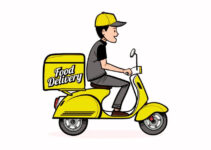Diageo is a British alcoholic beverage manufacturing multinational company. The alcoholic beverage brand started its business in 1997. Today, we’ll discuss the SWOT analysis of Diageo; it outlines strengths and weaknesses; opportunities, and the threats that the company has to face; as a business strategy analysis example company.
Products and services portfolio of Diageo
- Wine
- Beer
- Spirit
- Alcoholic beverages
Subsidiaries of Diageo
- United Spirits 54%
Brands of Diageo
- Crown Royals
- Captain Morgan
- Guinness
- Baileys
- Johnnie Walker
- Smirnoff Vodka
Statistical facts and figures of Diageo
- Annual revenue: 23.515 billion British Pounds (2023)
- Net income: 3.766billion British Pounds (2023)
- Asset net worth: 35.621 billion British Pounds (2023)
- Employees: 30000
Competitors of Diageo
- American Brands
- Constellation Brands
- Brown-Forman
- Bacardi
- Pernod Ricard
- Beam Suntory
- Molson Coors
- Heineken
The SWOT analysis of Diageo would analyze the internal strengths and weaknesses of the company; and external opportunities and threats that the brand has to face. Here’s Diageo SWOT analysis as a business strategy analysis example company as follows;
Strengths of Diageo
Some of the main internal strengths in the Diageo SWOT analysis example company as business strategy analysis are as follows;
Large Network
Diageo has established a very large distribution market network. According to an estimate, Diageo is operating its business in approximately 180 countries and 21 geographical regions in various countries across the world. The large market network of the alcoholic beverage brand amplifies the customer market reach and influence of the brand.
Brand Portfolio
Diageo has a very large beverage brand portfolio comprising of roundabout over 200 alcoholic drink brands. They help the company to offer alcoholic beverages to various segments of the customer market under different brand names. It decreases the risk factor and strengthens the company’s earnings and network.
Market Leadership
Diageo has achieved a market leadership position in the alcoholic beverage market. According to an estimate, the company has a market share of approximately 28% in the liquor category.
Marketing
Diageo is highly proactive in running various types of marketing and advertisement campaigns for the promotion of its alcoholic beverages and subsidiary brands. The company employs various media channels to approach the targeted customer market.
Recognized Brand
Diageo is a well-recognized brand in the alcoholic beverage industry. The company offers a wide range of drinks in various packaging under different pricing to efficiently target various segments of the customer market.
Weaknesses of Diageo
Some of the main internal weaknesses in the Diageo SWOT analysis example company as business strategy analysis are as follows;
Low Market Share of Wine
Diageo has a limited market share and a weak market presence in the wine category. It shows the company’s heavy reliance on liquor and other alcoholic drinks as its main sources of revenue, sales, and growth.
High Operational Cost
The operational cost of Diageo is very high due to high legal cost, distribution, and license agreement costs. High operational cost is negatively impacting the revenue and profitability of the company.
Limited Market Share
Diageo has a limited market share as compared to developing countries and emerging markets. Heavy reliance on a few markets is not a good business and market strategy for the brand.
Opportunities for Diageo
Some of the main available opportunities in the Diageo SWOT analysis example company as business strategy analysis are as follows;
Market Expansion
Diageo should expand its alcoholic drink business and market into new regions, countries, and markets across the world. The global market holds great growth potential for the alcoholic beverage business; market expansion into emerging markets would amplify the company’s market share, revenue, and profitability.
Portfolio Expansion
Along with market expansion, Diageo should also expand its product and service portfolio by launching juices and soft drinks for customers. The consumer market has become highly cautious about their health and diet, and they prefer healthy food and drinks. It would help the company to target new segments of the customer market.
Strategic Alliance
Diageo should develop strategic alliances and partnerships with another alcoholic drink brand. The joint venture and sharing of resources would lead the company to develop unique tastes and enter new markets across the world.
Threats to Diageo
Some of the main potential threats in the Diageo SWOT analysis example company as business strategy analysis are as follows;
Tough Competition
Diageo is facing tough competition from other competitive brands like Heinekens, American Brands, and Constellation Brands. They all have established a very large market share in the alcoholic beverage industry; their market presence negatively impacts the company’s sales and network.
Health Concerns
The consumer market has become highly cautious about the type of food they’re putting into their bodies. They’re saying no to alcoholic beverages, and it leads them to lose control over their senses.
Conclusion: Diageo SWOT Analysis Example Company |SWOT Analysis of Diageo |Business Strategy Analysis
After an in-depth study of the swot analysis of Diageo; we have realized that Diageo is the world’s leading retail alcoholic beverage brand. If you are learning about Diageo SWOT analysis example company; then you should keep in mind the abovementioned internal strengths and weaknesses; external opportunities and threats as brand strategy analysis.
References

Ahsan Ali Shaw is an accomplished Business Writer, Analyst, and Public Speaker. Other than that, he’s a fun loving person.


